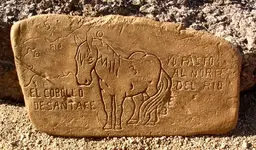Real de Tayopa Tropical Tramp
Gold Member
- Joined
- Nov 8, 2004
- Messages
- 14,582
- Reaction score
- 11,947
- Golden Thread
- 0
- Location
- Alamos,Sonora,Mexico
- Primary Interest:
- All Treasure Hunting
Good evening my friends: k will start with -->
I was merely joking in mentioning Lamar, he is completely innocent of the suggested remarks. he he he appology Lamar. A routine idle time scan always restarts the computer after, and in doing so I lost my beautiful post, snifff.
~~~~~~~~~~~~~~~~~~~
Oro you posted -->
I would like to you explain why this site is identified with Cibola, if you have time?
~~~~~~~~~~~
I always have time for you ORO. Simply because they covered their homes with iron pyrites, which is known as fools gold. There were also 7 pueblos in the valley complex, and they had an enormous amount of figurines and statues of Buffalo. In every respect, they fit the description in every way, except for the Gold.
The valley is rather isolated in a very rugged section of the country. Easily bypassed in the past.
Most have no idea just how broken up and rugged the Mt range country of Mexico is. It is said that when Cortez was explaining to the King about Mexico, he was quiet for a moment, then took a piece of parchment, crumpled it up into a very small piece, then opened it up and spread it in front of the king saying "that is Mexico Sire". A very accurate description.
Esteban just happened to pass by and saw them glittering in the sun, so his story wasn't a complete fabrication, however, it did set off the massive search for them since they did fit the legendary lost cities.. Unfortunately they all bypassed it and went far, far, to the North. as we now know, even Estaban on his return. After due research, the United Nations is seriously considering them as a world heritage. They were instrumental in accelerating the exploration of North America.
++++++++++++++++++++++++++++++++++++++++++++++++++++++++++++++
You also posted -->
Under this Pre-emption law, I believe there was also a requirement for the claimant to have made certain improvements upon the land so claimed, including but not limited to a water source
~~~~~~~~~~~~~~~
ORO, under the Spanish/Mexican law just grazing your animals on the land is possibly enough. Naturally a home is a far stronger factor.
++++++++++++++++++++++++++++++++++++++++++++++++++++++++++++++
Question, was the American Bison known in the old country prior to Americas last discovery ?? How did the Siete ciudades de Cibola - the seven cities of the Buffalo get started if there was no knowledge of Cibalo / Buffalo then? To whom do we owe the first knowledge of them which means that America was visited long before 1492 , possibly even earlier than the vikings and IRISH? Hmm where did the Blue eyed Mayos of Sonora, Mexico originate?
ROY, you do have blue eyes no? Nah, sorry, there can't be any connection since they predate you, stilll??
Don Jose de La Mancha
I was merely joking in mentioning Lamar, he is completely innocent of the suggested remarks. he he he appology Lamar. A routine idle time scan always restarts the computer after, and in doing so I lost my beautiful post, snifff.
~~~~~~~~~~~~~~~~~~~
Oro you posted -->
I would like to you explain why this site is identified with Cibola, if you have time?
~~~~~~~~~~~
I always have time for you ORO. Simply because they covered their homes with iron pyrites, which is known as fools gold. There were also 7 pueblos in the valley complex, and they had an enormous amount of figurines and statues of Buffalo. In every respect, they fit the description in every way, except for the Gold.
The valley is rather isolated in a very rugged section of the country. Easily bypassed in the past.
Most have no idea just how broken up and rugged the Mt range country of Mexico is. It is said that when Cortez was explaining to the King about Mexico, he was quiet for a moment, then took a piece of parchment, crumpled it up into a very small piece, then opened it up and spread it in front of the king saying "that is Mexico Sire". A very accurate description.
Esteban just happened to pass by and saw them glittering in the sun, so his story wasn't a complete fabrication, however, it did set off the massive search for them since they did fit the legendary lost cities.. Unfortunately they all bypassed it and went far, far, to the North. as we now know, even Estaban on his return. After due research, the United Nations is seriously considering them as a world heritage. They were instrumental in accelerating the exploration of North America.
++++++++++++++++++++++++++++++++++++++++++++++++++++++++++++++
You also posted -->
Under this Pre-emption law, I believe there was also a requirement for the claimant to have made certain improvements upon the land so claimed, including but not limited to a water source
~~~~~~~~~~~~~~~
ORO, under the Spanish/Mexican law just grazing your animals on the land is possibly enough. Naturally a home is a far stronger factor.
++++++++++++++++++++++++++++++++++++++++++++++++++++++++++++++
Question, was the American Bison known in the old country prior to Americas last discovery ?? How did the Siete ciudades de Cibola - the seven cities of the Buffalo get started if there was no knowledge of Cibalo / Buffalo then? To whom do we owe the first knowledge of them which means that America was visited long before 1492 , possibly even earlier than the vikings and IRISH? Hmm where did the Blue eyed Mayos of Sonora, Mexico originate?
ROY, you do have blue eyes no? Nah, sorry, there can't be any connection since they predate you, stilll??
Don Jose de La Mancha



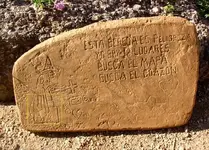
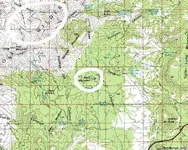
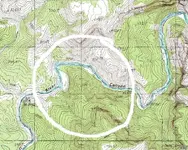
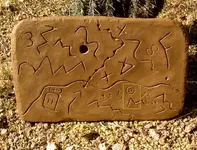
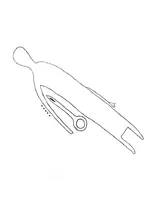
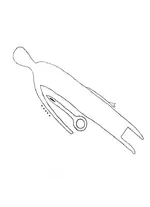
 I have my own ideas, but I have yet to hear of an explanaton.
I have my own ideas, but I have yet to hear of an explanaton.